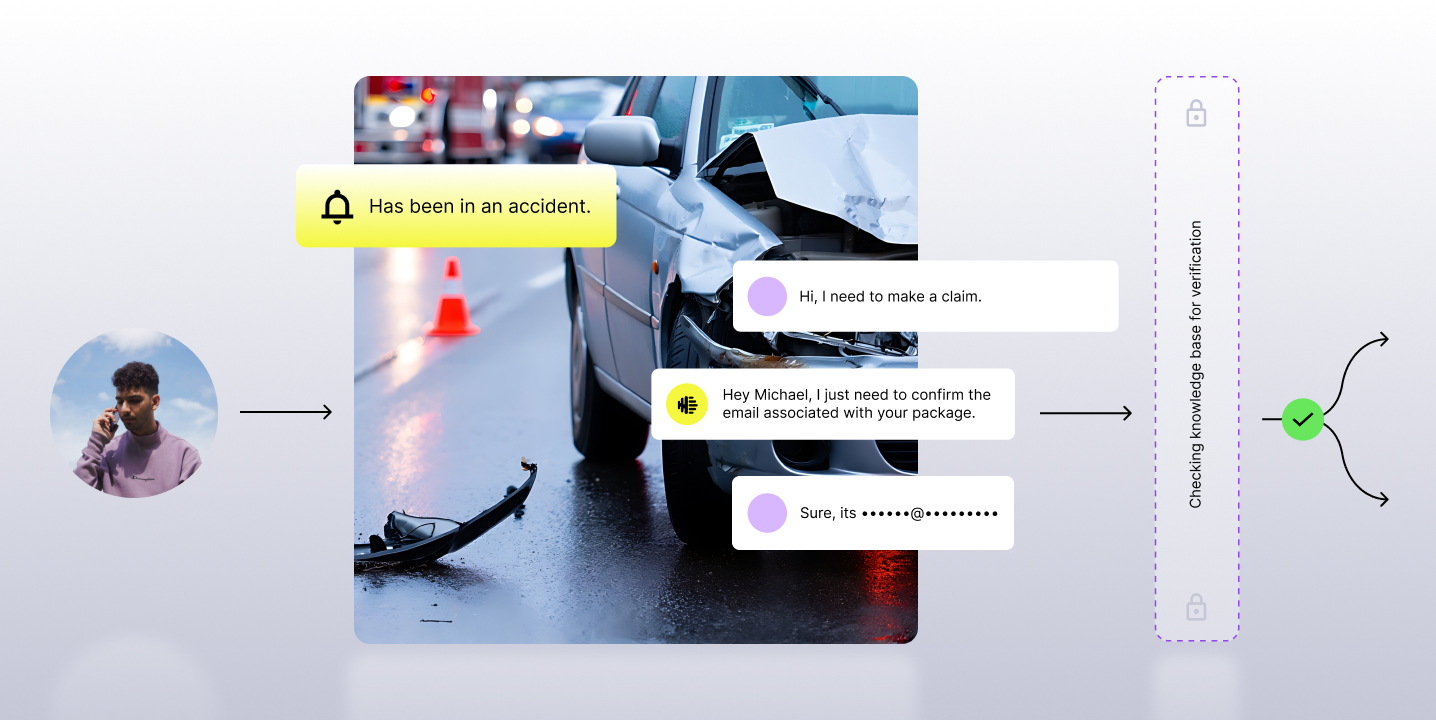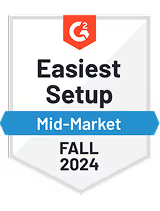For contact centers built to drive revenue and growth for their organization, whether inbound or outbound, success rests on conversion rates. For outbound sales, it’s the call-to-conversion rate and conversions per day. For inbound, it’s close rate and additional revenue. For debt recovery agencies, it’s about increasing growth per call.
This is part of the larger shift we’re seeing, that 85% of contact center leaders plan to be revenue generators by the end of 2021. The driving force behind this transformation is artificial intelligence. That's what we'll focus on, presenting on how to create new and improved ways to build better coaching programs, personalize customer experiences, and uncover insights. The ultimate goal? Increasing conversion rate. Better yet, making a one-call close.
In this blog, we’ll surface eight innovative ways sales and revenue focused contact centers are increasing their conversion rates.
1. Adhering and improving sales and discovery scripts
Sales scripts are the foundation of a sales conversation, helping agents stay more productive and on-message while adhering to best practices. However, until recently sales leaders didn’t have the power to truly A/B test and validate their sales scripts with data. It was all anecdotal, or based on a very small sample size of manually reviewed calls.
And that’s a major gap - leaders don’t know what top performers are doing to drive business outcomes.
Sales script adherence
But with technological strides, high-volume sales teams can leverage AI and automation for the “magic” and “tragic” moments, or interactions, between customers and agents at scale. These “magic” moments are the interactions that they know will lead to more business. Tragic do just the opposite.
For example, we had one leading moving company who uses Observe.AI was able to see that only 2% of their reps were asking customers if they wanted to purchase packaging as an add-on. That’s 98% of sales conversations leaving money on the table. They updated their outbound sales scripts, and the result was a $1M increase in just 30 days after implementing new scripts.

Sales script improvement
But it’s more than just making sure agents are adhering to the sales script. The same insights and monitoring can be used to improve those scripts as well.
This is looking at the quality of objection handling and the understanding of customer rebuttals by agents (at the various funnel stages - we’ll talk about this later in the post), and seeing exactly how prospects are responding to any updates made.

2. Building better sales scripts with firmographic data
Every prospective customer is different. So why are you talking to everyone the same way? Deep analysis arms you as a sales leader with new insights that let you customize and improve your sales scripts to run better conversations.
Take firmographic analysis - looking at where your customers are located and customizing the script to in essence, speak their language. Combined with sentiment analysis, teams can see how prospects from certain regions respond to the script. When integrated with a CRM, the agent is armed with a more relevant sales script and can build a better rapport early on.
3. Monitoring and coaching on agent soft skills
Soft skills are the key to building rapport between an agent and customer, and rapport is the key to closing more business. The impact of agent soft skills on conversion rate is a game changer, but it’s about more than just knowing which ones make an impact. It’s being able to monitor that your agents are displaying those soft skills, and knowing exactly what to train those agents on.
When it comes contact center agents handling high-volume sales, common valuable soft skills include:
- Problem-solving skills: the agent’s ability to think critically and find answers to complex queries, and more skillfully resolve the caller’s issue.
- Positivity: hand in hand with agent empathy, an agent should approach every conversation with positive intent. In addition to providing a positive experience for callers, this also contributes to a better workplace culture among other agents and managers.
- Collaboration: with coaching programs becoming smaller and more targeted, small group, peer, and 1:1 training sessions rely on a collaborative mindset to yield more impactful results.
- Adaptability: the more complex the industry or product, the more complex the sales process. In an ever-evolving world, agents must be able to adapt to frequent changes, whether it be coaching programs, new compliance legislation, or environmental changes out of their control (like the rapid shift to remote work as a result of COVID-19).
- Active listening: There’s a difference between hearing the caller and truly listening to the caller. Active listening is the key to understanding the caller’s and more effectively closing business.
4. Monitoring the full funnel
Conversion rates aren’t just based on when a prospect becomes a customer. For the highest performing sales teams, it’s looking at the entire funnel, and improving the conversion rates stage by stage. It’s about understanding at what exact stage deals are falling off, and why.
- Is it an issue with the sales script?
- Is there a process inefficiency impacting the agent's ability to close?
- Is there a gap in agent training to handle a certain objection?
These are all common causes of a lower conversion rate throughout a sales cycle. So it’s critical to gain visibility into the interactions taking place stage-by-stage, and surfacing the major gaps to drive more impactful coaching and alleviate any inefficiencies to help your team close more business.
5. Uncovering process inefficiencies
Process inefficiencies are gaps in processes that are out of an agent's control, and can directly impact an agent’s conversion rate. One simple process inefficiency can have a huge impact on sales.
Common process inefficiencies include lack of permissions for agents, a suboptimal Internal Knowledge Base (IKB), and technological limitations (we’ve got a great example of this one in the next paragraph.)
We have a customer in the staffing space whose business is built on booking interviews with prospective employees. With interaction analytics, they discovered that the phrase “calendar full” was said on 30% of calls where an interview wasn’t booked. That netted out to 2000 additional candidates a week they could’ve been booking. The culprit was a technological issue with their current calendaring system. An easy fix, with massive results.
6. Accelerating agent onboarding
A survey conducted by Paycor found that 58% of employees are likely to stay at a company for three or more years if they have a great onboarding program.
And coaching begins at onboarding. It’s a whole team effort - from compliance training on best practices for handling customer data, to sales training on objection handling and utilizing your IKB. For the highest-performing sales teams, this includes onboarding covering:
- Openers and closers
- Need/pain identification
- Discovery techniques
- Soft skills (empathy and active listening)
- Internal knowledge base
But the secret lies in knowing what to coach on, and methods for monitoring the impact of that coaching early on. Are agents putting the onboarding material to practice? Which coaching tracks are resonating, and which ones aren’t?
Being able to not just monitor for keywords and phrases (to analyze openers, closers, empathy statements), but also harnessing sentiment analysis to gauge how soft skills are impacting sales conversations and ultimately close rate is what sets onboarding programs that work apart from those that don’t.
7. Turning DSAT into CSAT
One poor sales conversation doesn’t necessarily mean lost business. There’s opportunity to turn that experience around and drive more business. It starts with accessing sales calls where negative customer sentiment was displayed (for whatever reason).
From there, teams can establish a protocol to proactively call back those prospects and offer them discounts or refunds (in the case of retention), to prevent bad customer reviews before they happen.
8. Increasing QA automation means more time for coaching
Another process-driven opportunity lies in QA automation - taking the most simple and tedious, yet time-consuming QA tasks and letting AI do the work. In a high-volume sales organization, this is analyzing 100% of the sales calls taking place and accurately scoring them.
The result? Not just better coaching insights (like surfacing critical insights and identifying gaps), but more time for coaching.
Let’s look at another example. One of our customers, a F500 automotive dealer, has built a focus on a robust and transparent QA process (a major shift from their once painstakingly manual QA programs). One of the largest time wasters for their QA team was finding and surfacing the most important parts of a call to coach individual agents on. Now, that’s handled automatically - AI automatically scores parts of calls and provides a detailed tagged and time-stamped transcription.
From a workflow standpoint, this helps agents know why their performance was scored a particular way and reduced the number of agent disputes down from about six a month to zero -- a big win that ultimately saved supervisors hours of time each month that they could dedicate to coaching teams.
Looking forward
Contact centers aren’t just focused on support anymore. In fact, 64% of contact center leaders say their contact center is a revenue generator. That’s a huge opportunity, only growing behind the combination of interaction analytics and better coaching. As QA and coaching programs for high-volume sales teams get more automated, more accurate, and more efficient, look for major improvements in the ultimate goal: higher conversion rates.

















